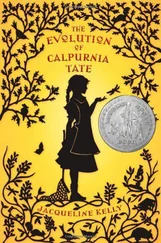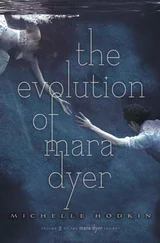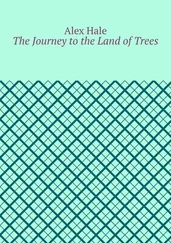“ Haywood! ” I shrieked.
“ Bruno! ” he screamed.
That night, even Haywood forgot his routine. He was so glad to see me again. That night, we sat up in the laboratory, separated by a wall of glass, and howled gibberish at each other almost until the beginning of dawn.
I have never, by the way, eaten a raisin since. Raisins make me want to vomit. I hate raisins.
I shall never forget the day that Lydia, on one of our outings, took me to the Museum of the Art Institute of Chicago. On that day, all the dormant potential for sweetness and light buried deep in some volcanic cranny of Bruno’s soul erupted forth to the surface, igniting fires, fires!
This day is important, Gwen, because I became an artist on that day. It had been a few months since the biting incident. It was summer again. It’s a snarling irony that there was actually a bit of a row that took place on the museum steps that morning between Lydia and a rent-a-cop, some dough-faced lout in a cryptofascist uniform with shiny buttons all over it claiming to be a museum employee, concerning the question of whether or not a chimpanzee should be admitted entrance into this temple of Eleusinian Mysteries — an art museum. Bigotry! Just when I thought Lydia and this Gestaposeur might actually come to blows, some higher-up from the museum’s bureaucracy intercepted the argument as third-party arbiter, and it was finally determined that my admittance was permissible depending on the caveats that I was to be at all times: (one) secured on my leash, and (two) either holding Lydia’s hand or being physically carried by her, which was fine with me because there was no other place in the world I’d rather have been than dangling from the neck of my Lydia.
The first paintings to really excite me were the many female nudes: reclining, standing, bathing, sleeping, descending staircases, splishing about in streams or wringing riverwater from their hair, standing on clams, brandishing swords and scales in allegorical triptychs while their diaphanous garments teasingly slip from their shoulders, unabashedly loafing around in various states of undress in the Turkish seraglios of tittery European imagination, and that beautiful Manet of the pouty strumpet lounging on a pile of silk pillows with a hand planted on her crotch and her shoes on…. Clearly the Great Master(bator)s of the History of Art were just as irresistibly fascinated by the very subject that did then and continues to fascinate Bruno: the disrobed human female. I couldn’t contain myself! — I wanted to fuck them all! I wanted to fuck Manet’s Olympia and Botticelli’s Venus, I wanted to fuck Mary Magdalene in her grotto and that double amputee Venus de Milo who’s got nothing now to prevent that sheet from falling, I wanted to fuck all the bare-breasted goddesses in the allegorical triptychs, too, I wanted to fuck Justice and fuck Peace and fuck Fidelity, I was even waiting at the bottom of the stairs for the nude to finish descending, where I would unlock her with the key of my desire from Duchamp’s prismatic prison! After advancing first through the classical stuff and then through the tantalizing objects of Italian Mannerist lust, then eighteenth-century French Romanticism — robes, togas, tunics, and bedsheets unfurling left and right to expose rolling pink swaths of luminous human flesh you could almost smell and taste in the paint — we came to the Impressionists: the two I liked the best were certainly Van Gogh and Gauguin.
Gauguin, because all those sweet plump honey-complected Polynesian tarts re-ignited my libido after I’d had to suffer through a bunch of brain-numbingly insipid pictures of flowers and vegetables and dead fish and other such crap.
But Van Gogh! Van Gogh, because he’s a genius. Van Gogh was the first painter I admired for purely platonic reasons. My God, the landscapes of Van Gogh! You know all those pastoral pictures of the wind shushing through cypress trees on grassy hillsides somewhere in the south of France? What pastoral? Those are the least pastoral pastoral paintings you’ll ever see. Everything in the landscape is chattering and rattling and hissing and screaming! Those paintings aren’t pastoral! — they’re full of weeping and gnashing of teeth.
Then we came to the Moderns, which I also liked, but in a different way. I took a crash course in the history of Western art that day, and so twentieth-century sallies into the realm of the wildly abstract shocked me on the same day I was also shocked by the concept, the very concept of representing three-dimensional form on canvas at all. I saw Picassos, Matisses, Mondrian’s colorful boxes, Jackson Pollock’s haphazard psychoscapes, Rothko’s subtly defined rectangles of color. Yes, yes, said Bruno to his soul. This is it. This stuff is the best of the best of being human.
We lingered in the museum until it closed — so unwilling was I to leave the place. When we came home that day, I was able to communicate to Lydia, in a struggling handful of gestures and rudimentary utterances, that I had found my calling: I wanted to paint.
“Do you want to draw pictures like the ones we saw today at the museum?” said Lydia.
Yes, I affirmed, nodding. Yes, yes, yes.
The very next day Lydia — this inexhaustible fount of human benevolence — went to the store and bought me a large pad of sketch paper and some art supplies: crayons, pencils, watercolors, a box of Magic Markers.
Crayons have never done it for me. I realize that the image of a crayon by itself practically stands as a synecdoche of childhood, but in practical usage I found them sorely wanting. I detested the way the tips would become blunted almost immediately. I did not like the rough quality of the lines they made on the paper, I did not like the feeling or the texture, and I hated when their waxy tips bore down into the paper wrapping — the sound of the paper crayon wrapper scraping against the paper I was drawing on never failed to solicit a cringe and a shiver from me. No! — to hell with crayons! I was a marker man.
Magic Marker was my first medium, Gwen, and I still think it’s a wonderful one. There’s the exhilarating smell when you uncap a marker, the juicy wet nib, the feeling of the thing bleeding ink onto the page for you, so smooth, so vibrant: the change one enacts upon a blank sheet of paper is so material, so pleasingly concrete and direct. Here’s a naked field of virginal white — now uncap a marker of your favorite color, drag it across the page and— shooop! — now there’s a violent streak of color in it, the immediately visible effect of your own physical agency, ha, ha, ha!
The very first works in my oeuvre were mostly nonrepresentational and wildly expressionistic. I would create a picture that was a crazed scramble of red lines with an ugly muddy splotch right in the middle of it where young Bruno had experimented with scribbling all the different-colored markers on top of each other until the paper was wavy and warped with the dampness of so much ink, and then title the piece “Shoe.” Or I would jam a marker into the page like a jackhammer half a dozen times to make an exploding constellation of spattery green blots, then connect them with shaky blue lines, scribble over the whole thing with the orange marker and title it (intended only in affection) “Lydia.”
I would draw all day long, practicing constantly, flying through reams of sketch paper and many, many boxes of Magic Markers. I rapidly improved, refining both technique and concept. During this period of accelerated mental maturation, when I wasn’t either studying language with Lydia or watching my beloved Bert and Ernie on Sesame Street , I was drawing. Soon I also got the knack of representational form, and now I was drawing everything in the house: pictures of the furniture, studies of various rooms, pictures of birds and squirrels I saw in the backyard, pictures of my goose lamp drawn from different angles, self-portraits drawn from the mirror, portraits of Bert and Ernie I drew from studying their images on television, and hundreds and hundreds and hundreds and hundreds of portraits of Lydia.
Читать дальше












